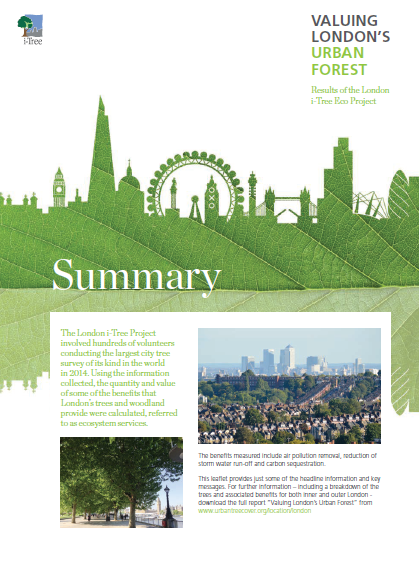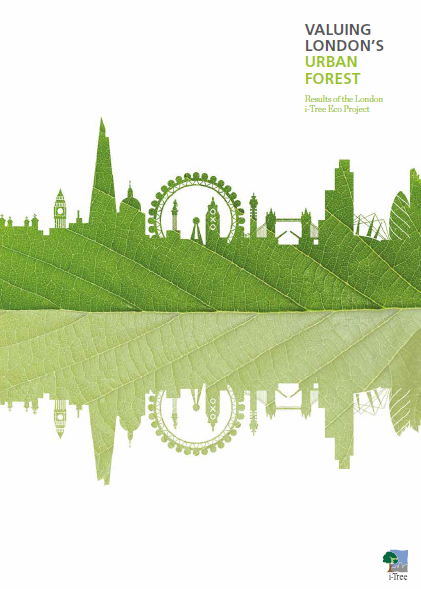Summary
About i-Tree Eco London
In order to better understand the natural capital of urban trees in London and to value the services they provide, an i-Tree Eco survey was undertaken in the summer of 2014.
The survey was undertaken by the RE:LEAF London Partnership and completed by over 300 volunteers, supported by trained i-Tree Eco surveyors.
Project partners
- Forestry Commission England
- Greater London Authority
- Forest Research
- London Tree Officers Association
- Trees for Cities
- Tree Council
- Natural England
- Treeconomics
Research Objectives
This project aimed to:
- promote London’s urban forest and the benefits it provides
- provide a pan-London picture of tree and woodland cover
- engage volunteers in trees and further opportunities to plant and manage them
- provide verifiable economic values to the benefits that the urban forest provides
- establish values that are a precursor to proper asset and risk management
- establish parity between the services that the urban forest provides with other recognised urban infrastructure such as street lighting and highways
Findings and Recommendations
The survey indicated that London’s urban forest comprises 8,421,000 trees.
The ecosystem services provided by these urban trees that were considered within the project were carbon capture, rainwater interception, the removal of air pollution, building energy savings and building energy carbon avoided, and these were valued at £132.7 million per year.
This study demonstrates the value that urban trees provide to all who live in, work in and visit London. This project highlighted that London’s urban forest comprises almost 8.5 million trees – that’s one per inhabitant of London.
The project highlighted that approximately 60% of trees in London are privately owned, yet the publically owned trees contribute to around 60% of the ecosystem services. This is due to the greater prevalence of mature and large canopy trees found in public ownership.
In summary, the project report found that London’s trees are a valuable functional component of the landscape, they are under threat from the impacts of a changing climate and more needs to be done to safeguard London’s urban forest for the future – protecting the existing stock and planting more for future generations.
For further details and results see the Full Report and Summary Report in the Documents section (below).
Downloads
Funding & Partners
- Forestry Commission England
- Greater London Authority
- Forest Research
- London Tree Officers Association
- Trees for Cities
- Tree Council
- Natural England
- Treeconomics


